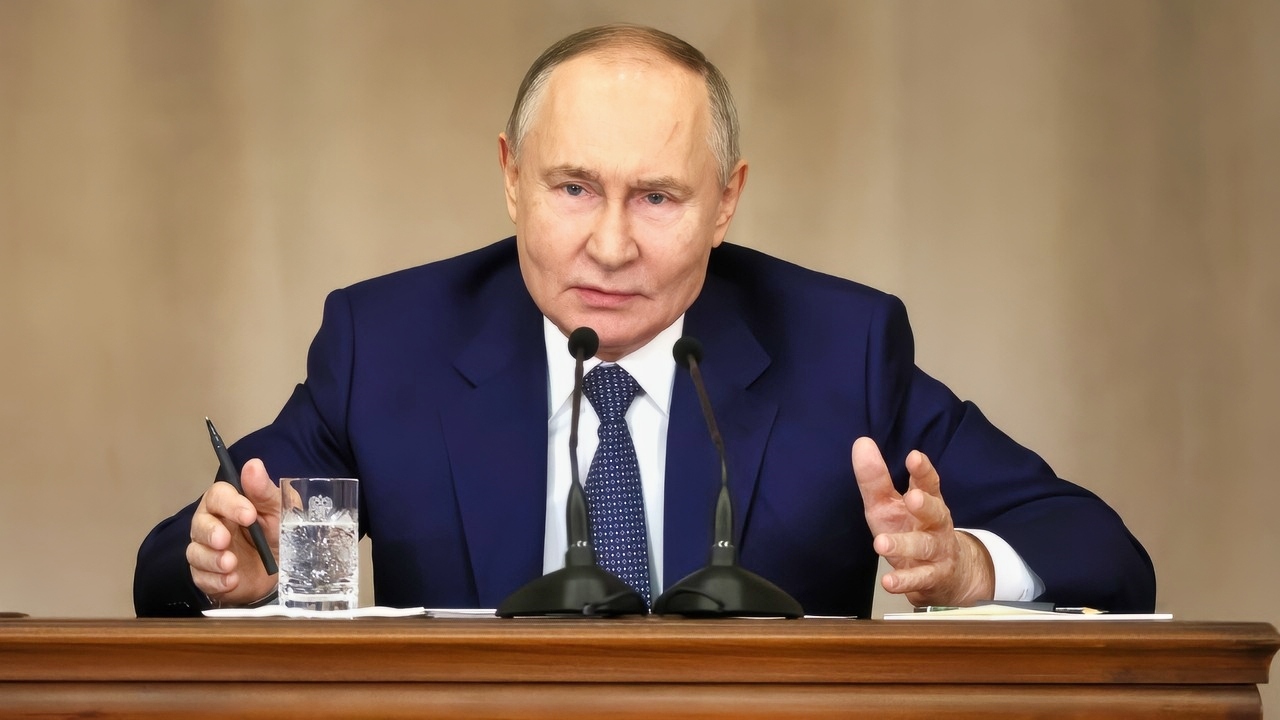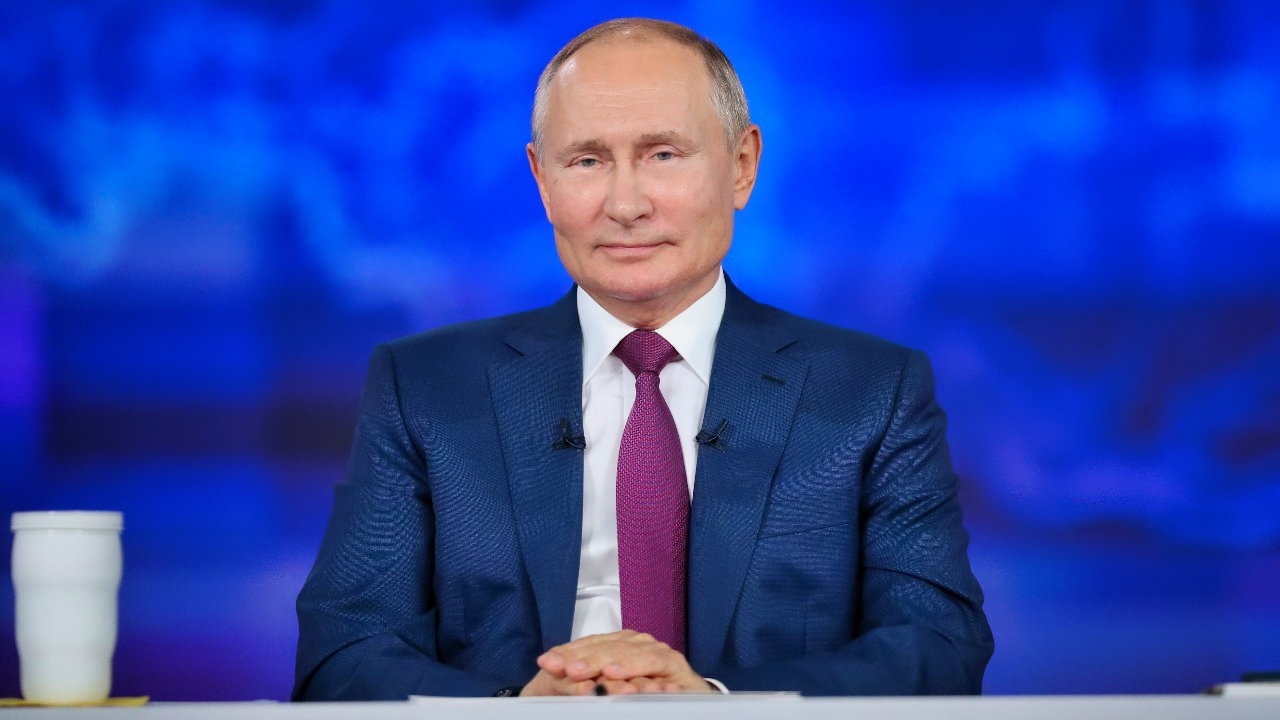Key Points and Summary – Russia’s draft 2026–2028 budget signals mounting strain on war financing. Opposition economist Vladimir Milov flags seven straight years of >2% deficits and a 2025 shortfall raised to 2.6%, with official claims of later decline dismissed as unrealistic.
-Sanctions have shut Moscow out of global capital; domestic borrowing and dwindling reserves fill the gap as China reportedly rebuffs loans.

Putin November 2022. Image Credit: Creative Commons.
-The Kremlin hints defense outlays will fall as a share of GDP, while Rostec’s chief concedes near-zero profitability.
-With transparency shrinking, Russia can likely sustain only lower-intensity warfare—drones, missiles, limited offensives—raising doubts about duration and purpose of its campaign.
Seven Years of Red Ink for Russia: Can Putin Still Pay for Ukraine War?
Last month, the Russian government released a draft of the proposed 2026–2028 federal budget, which purports to show the near-term priorities of President Vladimir Putin.
Vladimir Milov, a Russian opposition politician who left Russia after Putin’s February 2022 invasion of Ukraine, has released a pessimistic assessment of the former KGB lieutenant colonel’s chances of being able to continue to bankroll his war in Ukraine.
Milov is now part of the leadership of the Free Russia Foundation, a think tank based in Washington, D.C.
In his latest report for the Foundation, he projects rough times ahead for Moscow due to a series of unfavorable trends.
According to his analysis, Russia’s budgetary situation is anything but “normal.”
“To keep [Russia’s] military machine running like this, a lot more money is needed — and there simply is not any,” said Milov, who in the early 2000s was an economic advisor for the Russian government.
He provided a draft of the report and gave an interview to the Kyiv Independent, which analyzed some of his findings.
Foremost among these troubling signs, if you are the one sitting in the Kremlin, is that Russia has run a budget deficit for the past seven years.

Putin Speaking in 2025. Image Credit: Creative Commons.
Milov’s report assesses this situation as a full-blown budgetary crisis.
Vladimir Dubrovskiy, who is a senior economist at the Center for Social and Economic Research in Ukraine, says the magnitude of the deficit is “Russia’s most serious economic and political-economic problem.”
Not a Winning Streak
Russia has experienced seven consecutive years of a high budget deficit exceeding 2 per cent.
This is a streak not seen since 1999, according to Milov’s analysis.
This demonstrates that the Russian government has discarded its long-time objective of keeping the budget deficit below 1 per cent of GDP.
For 2025, the Kremlin’s projected deficit was increased from 0.5 per cent to 2.6 per cent of total output.
The government is also officially stating that the 2026 deficit will decrease to 1.6 per cent of GDP, but most budgetary and economic analysts state that reaching that target is highly unlikely.
“The deficit that Russia is expecting for 2025 is quite significant. It is true that the planned deficit for 2026 is lower, but those numbers are wishful thinking,” said Benjamin Hilgenstock, who is head of Macroeconomic Research and Strategy at the KSE Institute.
Dubrovskiy also believes the Kremlin’s projections are highly suspect.
“If the war continues, the deficit will almost certainly grow significantly, as it did in the past,” he told the Kyiv newspaper. “Moreover, this estimate does not take into account the potential impact of future economic sanctions.”
No Access to Financial Markets
Hilgenstock noted that regardless of the real numbers, a 2-3 per cent of GDP deficit is “a lot for Russia since it doesn’t have access to financing like normal countries.”
Moscow has almost no access to any of the international financial markets due to sanctions imposed after the invasion of Ukraine.
This has reduced the Kremlin to relying on domestic borrowing and limited reserves.
Even The People’s Republic of China (PRC), which was seen as a potential lender at one time, has turned down Russian requests for government loans.
“Obviously the powers-that-be in Beijing have determined that the situation in Russia has reached the point where they are simply a bad credit risk,” said a NATO-nation intelligence officer with long experience in covering the PRC and its institutions. “[PRC Foreign Minister] Wang Yi may have said that ‘China cannot afford for Russia to lose this war.’
But he also did not say the China could afford to throw tremendous sums of money that can never be paid back to make sure that Russia does not lose.”
This creates a fiscal crisis that directly inhibits Moscow’s ability to sustain its war against Ukraine.
Putin has been forced to slow defense outlays, and caps have been imposed on any further increases in military spending to keep his deficits from ballooning.
As a sign that there is nothing but bad news and red ink to report, the Russian government no longer publishes actual data on its expenditures and only releases projections.
Between 2026 and 2028, Moscow is now reporting that its defense spending will remain at current levels and will actually drop slightly as a share of GDP from 6.3 per cent in 2025 to 5.5 per cent in 2026 and 2027, and further to 4.7 per cent in 2028.
“The military-industrial complex is facing financial difficulties,” Milov has said. “To keep it operating even at its current pace — without further cuts we’ve seen — is becoming increasingly difficult.”
Long-time Putin ally and former KGB comrade Sergei Chemezov, the CEO of Rostec, which is Russia’s largest arms producer, admitted in August that the industry was in trouble.
“The profitability of production remains low, and somewhere even zero, if not negative,” he said. This has the effect of leaving “not too many funds for development” of any new weapon systems.
This leaves Russia as being capable of affording only a limited, low-intensity war,” said Milov. He pointed out that at present the war is “not very intense.” There is only limited use of “heavy metal” military equipment such as tanks.
Moscow is instead largely engaging in drone strikes, missile attacks, and localized offensive operations. “This type of warfare they can sustain for some time,” Milov explained. “But the question is what for” and to what ends.
About the Author: Reuben F. Johnson
Reuben F. Johnson has thirty-six years of experience analyzing and reporting on foreign weapons systems, defense technologies, and international arms export policy. Johnson is the Director of the Asia Research Centre at the Casimir Pulaski Foundation. He is also a survivor of the Russian invasion of Ukraine in February 2022. He worked for years in the American defense industry as a foreign technology analyst and later as a consultant for the U.S. Department of Defense, the Departments of the Navy and Air Force, and the governments of the United Kingdom and Australia. In 2022-2023, he won two awards in a row for his defense reporting. He holds a bachelor’s degree from DePauw University and a master’s degree from Miami University in Ohio, specializing in Soviet and Russian studies. He lives in Warsaw.
More Military
‘Skipper, We Have Been Hit’: Tiny Nuclear Sub ‘Sank’ $4.5 Billion U.S. Navy Aircraft Carrier
China’s Military ‘Quantum Leap’ Doesn’t Add Up
Russia’s Air Defenses Are Springing Leaks—and Ukraine Is Exploiting Them
Japan Might Be Ready to Fight for Taiwan. Would America Do the Same?











Jim
November 12, 2025 at 11:26 am
I suspect there is financial strain as war is notoriously expensive.
But the reason for small-unit advances is drone warfare.
An interesting battlefield development, as the fall of Pokrovsk is imminent, a heavy fog enveloped the city, and the Russians advanced en mass into the city, openly, on foot, motorcycle, ATV, pickup truck, and heavier armored vehicles streaming into the city on a broad highway shrouded in heavy fog.
Heavy fog neutralizes the effectiveness of FPV drones, the operator can’t see the ground from over a hundred feet up, this makes it hard to know what your flight orientation is in relation to the ground (ask any pilot how fog effects flying).
A secondary effect: Kiev has a manpower crisis at the front after nearly four years of war and apparently had been thinly manning many sectors along the front and compensating with heavy reliance on drones to stave off the Russian advances (with some effect).
Fog exposes the manpower crisis Kiev is facing at the front.
Also, there is evidence the Russians have been able to triangulate the source of two-way radio signals between operators and drones, and then feeding the coordinates into real time firing solutions taking out nests of concealed operators leaving the thinly-manned front exposed without drone support and cover.
Kiev’s drone operators are on the run if they aren’t shut down by the fog.
So, while Russia is suffering economic strain, the war, itself, is coming into sharper focus as the Russian army hones its battlefield tactics and technology.
Moscow maybe running out of money, but Kiev is running out of men… who breaks first?
My bet: Kiev breaks first.